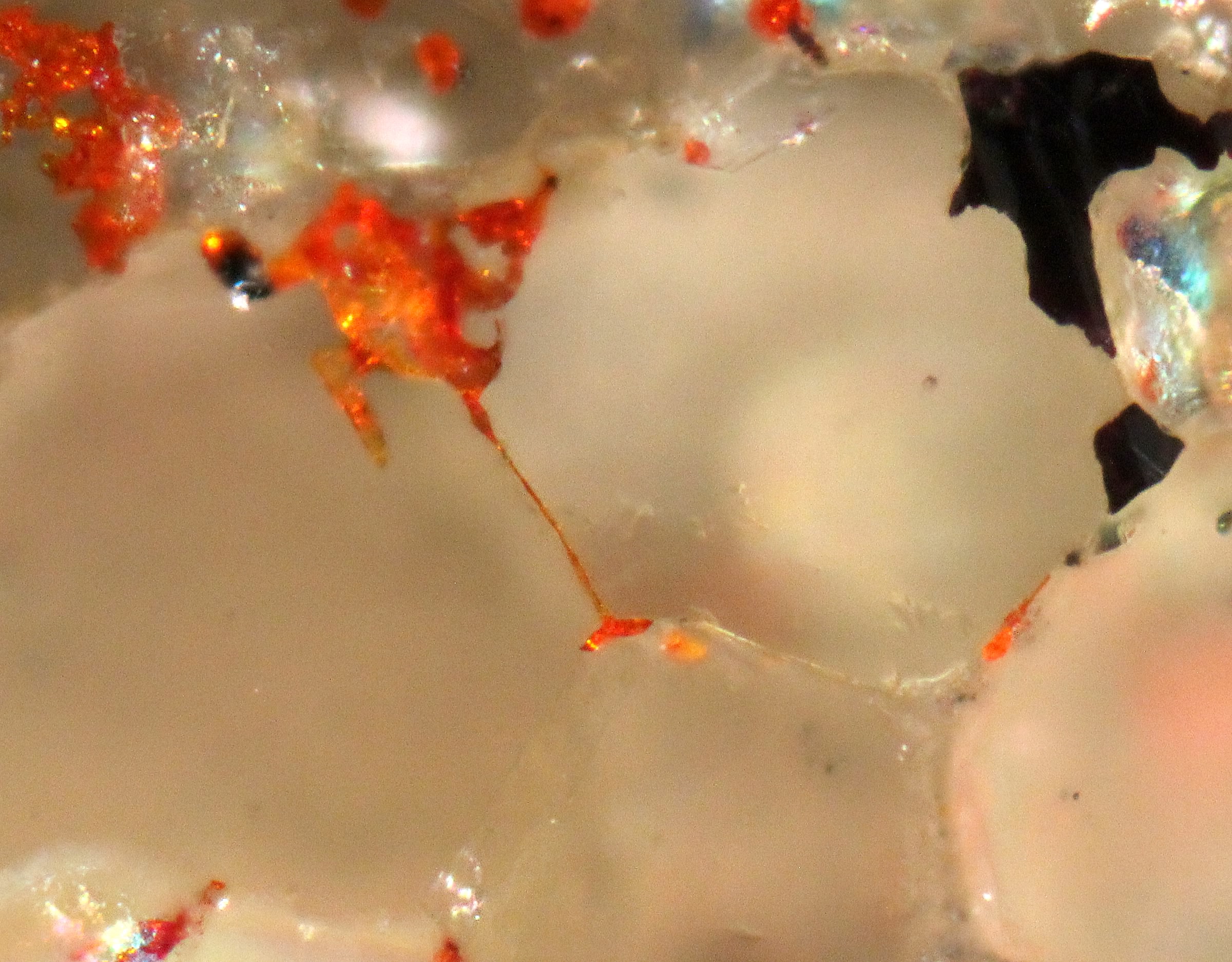THALMIGEN project overview
THALMIGEN is a SIR grant funded for 3 years to study the the mineralogy and geochemistry of thallium-rich ore bodies from southern Apuan Alps (Tuscany, Italy) and the associated environmental hazards.
 Thallium (Z = 81) is a chalcophile and lithophile element having an average concentration of 0.49 g/ton in the Earth's continental crust. All forms of thallium (Tl+ and Tl3+) are soluble enough to be toxic to living organisms and this element is more toxic to humans than other heavy metals. Notwithstanding its high toxicity, there is an increasing demand for thallium in the high-technology and future-technology fields, as testified by the increase in its value (6800 $/kg in 2012). Consequently, its fascinating chemistry, its high toxicity, and its increasing economical value make thallium and its compounds of particular interest and environmental concern.
Thallium (Z = 81) is a chalcophile and lithophile element having an average concentration of 0.49 g/ton in the Earth's continental crust. All forms of thallium (Tl+ and Tl3+) are soluble enough to be toxic to living organisms and this element is more toxic to humans than other heavy metals. Notwithstanding its high toxicity, there is an increasing demand for thallium in the high-technology and future-technology fields, as testified by the increase in its value (6800 $/kg in 2012). Consequently, its fascinating chemistry, its high toxicity, and its increasing economical value make thallium and its compounds of particular interest and environmental concern.
The recent finding of high thallium concentrations from the pyrite ore bodies from the southern Apuan Alps, Tuscany, Italy, represent an unicum in Italy and one of the few mineralogical localities world-wide characterized by the widespread occurrence of high concentrations of this element. Owing to the fact that thallium has received less attention from a geo-environmental point of view since its deposits are relatively rare, southern Apuan Alps represent an invaluable area for the study of thallium from a multidisciplinary point of view (mineralogy, petrology, environmental geochemistry).
 The project ''Thallium: Mineralogy, Geochemistry, and Environmental Hazards (THALMIGEN)'' aims at studying the thallium-rich ores from southern Apuan Alps taking into account the mineralogy and geochemistry of sulfide ores and their country rocks, and the environmental hazards related to the alteration of sulfides (particularly pyrite) and the release of heavy metals, with a particular attention on the thallium pathways.
The project ''Thallium: Mineralogy, Geochemistry, and Environmental Hazards (THALMIGEN)'' aims at studying the thallium-rich ores from southern Apuan Alps taking into account the mineralogy and geochemistry of sulfide ores and their country rocks, and the environmental hazards related to the alteration of sulfides (particularly pyrite) and the release of heavy metals, with a particular attention on the thallium pathways.
The primary sulfides and sulfosalts will be fully-characterized, coupling X-ray diffraction and chemical analyses. A particular attention will be addressed towards the characterization of Tl-rich pyrite. Indeed, notwithstanding the world thallium production is based on the pyrite processing, the speciation of thallium in pyrite is not known. The speciation of thallium in pyrite is particularly important in controlling the release of this heavy metal in the environment during the pyrite oxidation.
Oxidative processes on the primary sulfides and sulfosalts and the precipitation of Fe phases from acid mine waters give rise to interesting secondary mineral assemblages, controlling the release and dispersion of heavy metals in the environment. Consequently, these phases will be fully-characterized by X-ray diffraction, chemical analyses, IR and micro-Raman spectroscopies.
An accurate knowledge of thallium speciation and distribution within solid phases is a key point in the understanding of the release, transport, and distribution of this toxic element in the environment.
Project starting date: 23rd September 2015
Duration: 36 months
Total SIR-funding: 555.060 euro
The project is hosted at the
Department of Earth Sciences, University of Pisa, Italy.
 Thallium (Z = 81) is a chalcophile and lithophile element having an average concentration of 0.49 g/ton in the Earth's continental crust. All forms of thallium (Tl+ and Tl3+) are soluble enough to be toxic to living organisms and this element is more toxic to humans than other heavy metals. Notwithstanding its high toxicity, there is an increasing demand for thallium in the high-technology and future-technology fields, as testified by the increase in its value (6800 $/kg in 2012). Consequently, its fascinating chemistry, its high toxicity, and its increasing economical value make thallium and its compounds of particular interest and environmental concern.
Thallium (Z = 81) is a chalcophile and lithophile element having an average concentration of 0.49 g/ton in the Earth's continental crust. All forms of thallium (Tl+ and Tl3+) are soluble enough to be toxic to living organisms and this element is more toxic to humans than other heavy metals. Notwithstanding its high toxicity, there is an increasing demand for thallium in the high-technology and future-technology fields, as testified by the increase in its value (6800 $/kg in 2012). Consequently, its fascinating chemistry, its high toxicity, and its increasing economical value make thallium and its compounds of particular interest and environmental concern.
 The project ''Thallium: Mineralogy, Geochemistry, and Environmental Hazards (THALMIGEN)'' aims at studying the thallium-rich ores from southern Apuan Alps taking into account the mineralogy and geochemistry of sulfide ores and their country rocks, and the environmental hazards related to the alteration of sulfides (particularly pyrite) and the release of heavy metals, with a particular attention on the thallium pathways.
The project ''Thallium: Mineralogy, Geochemistry, and Environmental Hazards (THALMIGEN)'' aims at studying the thallium-rich ores from southern Apuan Alps taking into account the mineralogy and geochemistry of sulfide ores and their country rocks, and the environmental hazards related to the alteration of sulfides (particularly pyrite) and the release of heavy metals, with a particular attention on the thallium pathways.